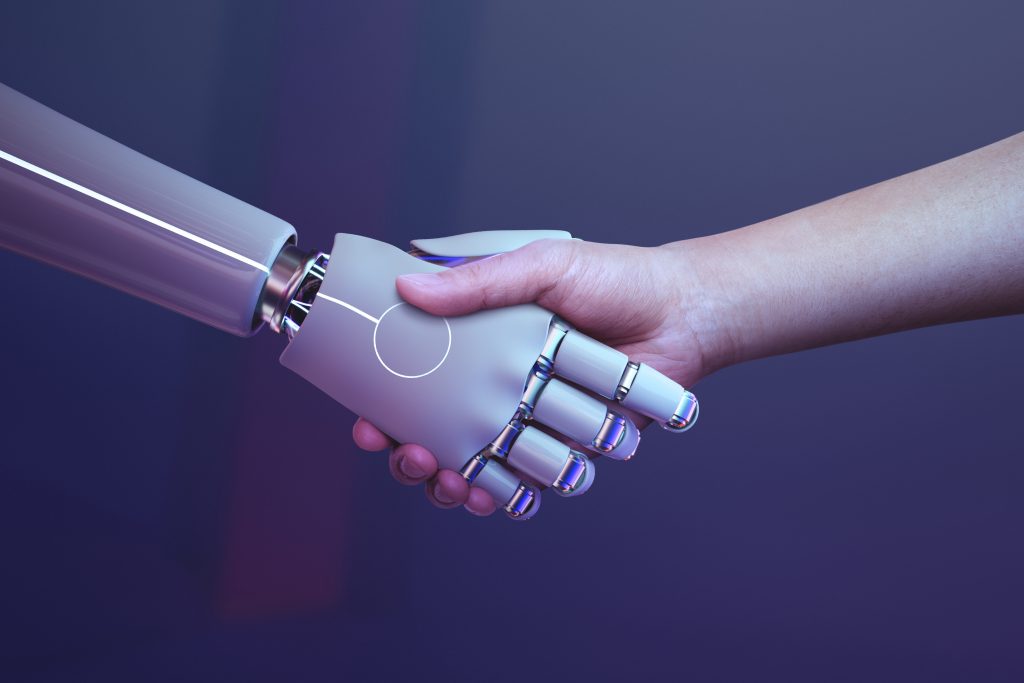ai in robotics

In simple terms, robotics is the science and technology of creating and using robots. Robots are machines designed to perform tasks or actions, often autonomously or with minimal human intervention, to make our lives easier, safer, and more efficient.
Artificial Intelligence (AI) plays a fundamental role in robotics, enhancing the capabilities and autonomy of robotic systems. Here are several ways AI is integrated into robotics:
–Sensory Perception–: AI, particularly computer vision and sensor fusion techniques, helps robots interpret and understand their environment through sensory data. This enables robots to recognize objects, people, and obstacles, making them capable of navigation and interaction.
–Object Recognition and Localization–: AI algorithms can identify and locate objects in a robot’s field of view. This is essential for tasks like picking and placing objects in manufacturing or sorting items in logistics.
–Path Planning and Navigation–: AI-based algorithms are used to plan optimal paths for robots in dynamic and complex environments. These algorithms take into account the robot’s location, obstacles, and objectives to make real-time navigation decisions.
ai in robotics
–Machine Learning for Control–: Machine learning techniques can be applied to learn control policies and adapt to different situations. Reinforcement learning, in particular, is used to train robots to perform tasks through trial and error.
–Natural Language Processing (NLP)–: NLP and dialogue systems enable humans to communicate with robots using natural language. This is crucial for human-robot collaboration and makes robots more accessible to non-expert users.
–Autonomous Decision-Making–: AI helps robots make decisions autonomously based on sensory input and predefined objectives. This includes decision-making in real-time scenarios such as self-driving cars navigating traffic or drones avoiding obstacles.
–Human-Robot Interaction–: AI-driven social intelligence allows robots to recognize and respond to human emotions, gestures, and verbal cues. This enhances their ability to interact with people effectively, making them useful in roles like caregiving and customer service.
–Simulated Learning–: Simulations powered by AI enable robots to learn and practice in virtual environments before applying their knowledge in the real world. This can speed up training and reduce the risk of damage to expensive equipment.
–Predictive Maintenance–: AI analytics can be applied to predict when robotic systems require maintenance or repair, reducing downtime and improving overall reliability.
–Deep Learning and Neural Networks–: Deep learning models, including convolutional neural networks (CNNs) and recurrent neural networks (RNNs), are used for a variety of tasks such as image recognition, speech recognition, and natural language understanding.
–Multi-Agent Systems–: AI techniques are employed to coordinate multiple robots in collaborative tasks. This is seen in applications like swarm robotics, where a group of robots works together to accomplish objectives.
–Adaptation to Uncertainty–: AI algorithms help robots adapt to uncertain or changing environments. For instance, autonomous vehicles use AI to make split-second decisions in unpredictable traffic situations.
–Cognitive Robotics–: This field combines AI and robotics to create robots that have cognitive capabilities, such as reasoning, planning, and learning, to perform tasks that require higher-level thinking.
ai in robotics

In summary, AI plays a crucial role in enhancing the perception, decision-making, and adaptability of robots. As AI technology continues to advance, it is likely to lead to even more capable and versatile robotic systems, with applications across a wide range of industries and domains.
FAQ
How is AI used in robotics?
SUGGESTION
ai in robotics
AI is used in robotics for perception (sensors), navigation, object manipulation, speech recognition, learning, and safe human collaboration.
What does AI mean in robotics?
SUGGESTION
ai in robotics
AI in robotics stands for Artificial Intelligence. It refers to the technology that enables robots to perform tasks, make decisions, and adapt to their environment with human-like intelligence.
What are AI robots give examples?
SUGGESTION
ai in robotics
AI robots are machines equipped with artificial intelligence capabilities to perform tasks intelligently. Examples include:
1. Roomba: A robotic vacuum cleaner that autonomously navigates and cleans floors.
2. Pepper: A humanoid robot designed for social interactions, often used in customer service.
3. Spot: A quadruped robot by Boston Dynamics used for various applications, including inspections and data collection.
4. Sophia: A humanoid robot developed by Hanson Robotics, known for its human-like appearance and conversational abilities.
5. Aibo: A robotic pet dog by Sony that uses AI to recognize and interact with its owners.
6. Kiva Robots: Autonomous robots used in warehouses for materials handling and logistics.
7. Self-driving Cars: Vehicles like Tesla’s Autopilot-equipped cars that use AI for autonomous driving.
These robots utilize AI to sense their environment, make decisions, and carry out tasks without constant human intervention.
What are 4 ways that AI is used in robotics?
SUGGESTION
ai in robotics
AI in robotics is used for:
1. Autonomous Navigation: AI helps robots move and navigate independently, avoiding obstacles and planning optimal paths.
2. Object Recognition: It enables robots to identify and interact with objects in their environment.
3. Human-Robot Interaction: AI makes robots capable of understanding and responding to human commands and gestures.
4. Learning and Adaptation: Robots can learn from experience and improve their performance over time, thanks to AI.
ai in robotics
THANK
what is AI // क्या है ai //type of ai
Reinforcement learning- (RL)-What is RL in reinforcement?-introduction

